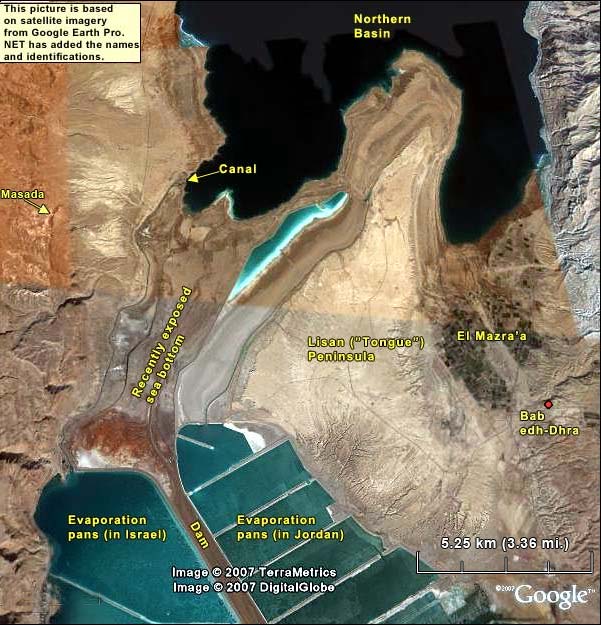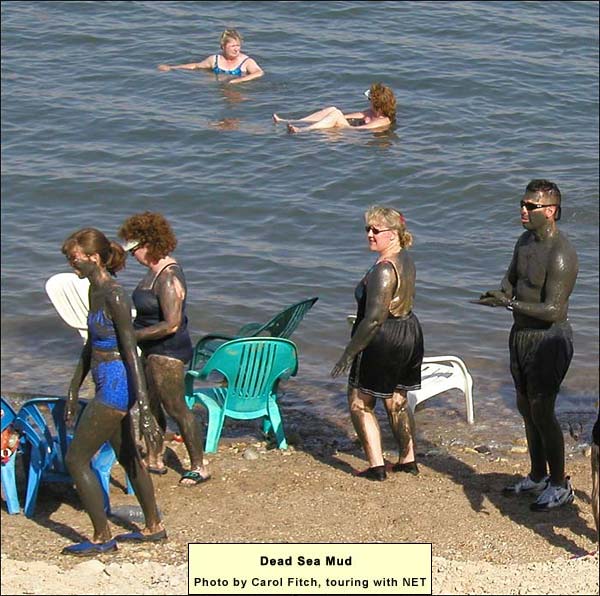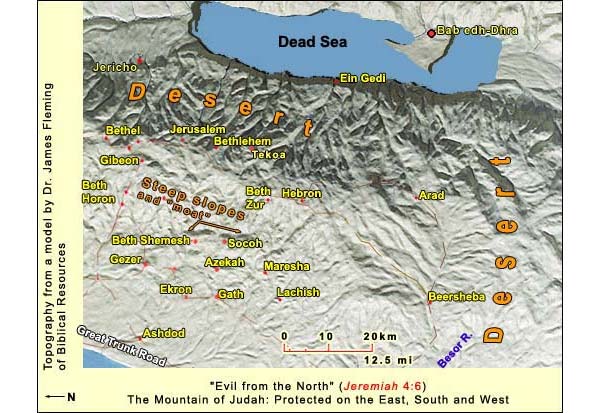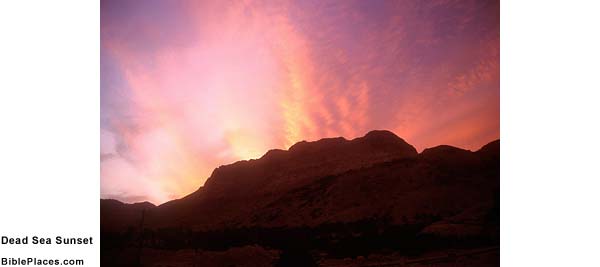Dead Sea

Afloat in the Dead Sea Floating in the Dead Sea is a unique experience, but there are several cautions: 1. Avoid getting water in the eyes. It stings like mad, although this passes. For the same reason, don't splash one another. 2. Don't swallow the water. 3. Salt water can tarnish cheap jewelry. 4. There are rocks. It is best to sit down on the shore and paddle in. 5. The human body is 70% water. When you emerge from the Dead Sea, your skin is covered with salt, and salt absorbs water. Therefore, you must take a shower. Otherwise, you will shrink to 30% of your previous size. Showers are available free at all the official beaches.

The mud of the Dead Sea is packed with magnesium, potassium, sodium, bromide and calcium, and our skin needs all of them. When the mud dries on the skin, furthermore, it absorbs any toxins that are there as a result of diet, so that one feels - and looks - refreshed. In response to a man who had Dead Sea water imported all the way to Italy, an ancient doctor named Galen (129-199AD) pointed out that you could get the same effect by putting salt in your bath. (De simplicium medicamentorum temperamentis 4, 20.) But one would have to have the right minerals in the salt. Note: The region of the Dead Sea is excellent for the relief (though not necessarily permanent cure) of psoriasis. The crucial factor is not the water, but rather the length of the solar rays that reach this depth, while harmful ultraviolet rays do not. Treatment requires a stay of about one month. {mospagebreak title=Biblical Dead Sea} The Dead Sea in the Bible Together with the Judean desert, the Dead Sea protected the mountain of Judah on its eastern side. South of the mountain was the Negev, while west of it lay a natural moat. The combination of barriers made Judah a landed peninsula, vulnerable only on the north. This geography helped it withstand the Assyrian onslaught in the late 8th century BC. If it hadn't, it is doubtful whether any group would have been left to preserve the biblical texts. (The Samaritans did not yet exist.)

Genesis 14 People have dwelled around the Dead Sea for at least 5500 years. One of the first mentions of settlement occurs in Genesis 13:10-13. Abram and his nephew Lot are to divide the land between them. The nephew gets first choice:
Lot lifted up his eyes, and saw all the plain of the Jordan, that it was well-watered everywhere, before Yahweh destroyed Sodom and Gomorrah, like the garden of Yahweh, like the land of Egypt, as you go to Zoar. So Lot chose the Plain of the Jordan for himself. Lot traveled east, and they separated themselves the one from the other. Abram lived in the land of Canaan, and Lot lived in the cities of the plain, and moved his tent as far as Sodom. Now the men of Sodom were exceedingly wicked and sinners against Yahweh.
In Genesis 14:1-4, we hear about a war between a king named Chedorloamer and his allies against the cities of the plain, which had rebelled against him. They included Sodom, Gomorrah, Admah, Zeboiim, and Zoar. The war takes place in the valley of Siddim at the Salt Sea (vss. 10-12):Now the valley of Siddim was full of tar pits; and the kings of Sodom and Gomorrah fled, and they fell there, and those who remained fled to the hills. They took all the goods of Sodom and Gomorrah, and all their food, and went their way. They took Lot, Abram's brother's son, who lived in Sodom, and his goods, and departed.
Obligated by family ties, Abraham intervenes and rescues Lot, who returns to Sodom. Sodom and Gomorrah The judgment of God falls on Sodom. Before the fire and brimstone descend, Lot is given the chance to flee with his family. Realizing that he cannot reach the mountains in time, he asks the destroying angel for an alternative (Genesis 19:19-24):“See now, your servant has found favor in your sight, and you have magnified your loving kindness, which you have shown to me in saving my life. I can’t escape to the mountain, lest evil overtake me, and I die. See now, this city is near to flee to, and it is a little one [Hebrew: mitz'ar]. Oh let me escape there (isn’t it a little one?), and my soul will live.”
He said to him, “Behold, I have granted your request concerning this thing also, that I will not overthrow the city of which you have spoken. Hurry, escape there, for I can’t do anything until you get there.” Therefore the name of the city was called Zoar.
The sun had risen on the earth when Lot came to Zoar. Then Yahweh rained on Sodom and on Gomorrah sulfur and fire from Yahweh out of the sky.
The toponym "Zoar" (meaning "small") helps us locate the area of the cities of the plains, because it is the only one of the five for whose site we have an ancient tradition. On a mosaic map dating from the 6th century AD in a church at Madaba, The church at Madaba, today in Jordan, goes back to Byzantine times. In the 19th century, a mosaic floor was uncovered, dating to about 580 AD. It contains a pilgrim's map of the entire country, including Jerusalem. Zoar is placed at the southern end of the Dead Sea. Later in Genesis 19, we see Lot fleeing Zoar "because he was afraid" and heading for the mountains to a cave. In 1986, investigators discovered the ruins of a 7th-century church on a slope west of the modern village of Safi, which some identify as Zoar. A stone bearing the inscription "Saint Lot" was discovered on the site, confirming this as the place where pilgrims came to visit Lot's Cave. The cave was reached through the back of the church's north aisle. This sanctuary too is clearly marked on the Madaba map, which locates it west of "little" Zoar. As for Sodom and Gomorrah, one notes (and the Israelites would have noted too) the ruins at Bab edh-Dhra' and Numeira, on the eastern shore of the Dead Sea. Both were walled settlements in the middle of the third millennium BC (Early Bronze III). They suffered destruction by fire around 2300, as did many cities at the time. Bab edh-Dhra' was the larger of the two, with a seven-meter-thick wall enclosing about ten acres. Roughly across from Masada, it lies 240 meters below world sea level. Numeira is eight miles to its south. In Prophecy The Dead Sea's characteristics were a prod to prophetic vision. Ezekiel and Zechariah foresaw a reversal of the sea's geography, corresponding to the reversal of history that would be ushered in by redemption. Here is Ezekiel (47: 8-10):
Then he said to me, These waters issue forth toward the eastern region, and shall go down into the Arabah; and they shall go toward the sea; into the sea shall the waters go which were made to issue forth; and the waters shall be healed. It shall happen, that every living creature which swarms, in every place where the rivers come, shall live; and there shall be a very great multitude of fish; for these waters have come there, and the waters of the sea shall be healed, and everything shall live wherever the river comes. It shall happen, that fishermen shall stand by it: from En Gedi even to En Eglaim shall be a place for the spreading of nets; their fish shall be after their kinds, as the fish of the great sea, exceeding many.
And here is Zechariah 14:8, from a longer passage that had tremendous influence on the development of apocalyptic eschatology."Apocalypticism," writes Frank Moore Cross Jr., "sees world history in the grip of warring forces, God and Satan, the spirits of truth and error, light and darkness. …The world, captive to evil powers and principalities which have been given authority in the era of divine wrath, can be freed only by the divine might. But the day of God's salvation and judgment dawns. The old age has moved to its allotted end and the age of consummation is at hand, the age of the vindication of the elect and the redemption of the world. Current events signal the approach of the end. The final war, Armageddon, has begun. The Messiah is about to appear, 'bringing a sword.' The Satanic forces, now brought to bay, break out in a final, defiant convulsion, manifest in the persecutions, temptations and tribulations of the faithful… [I]n the earnestness of his faith and the vividness of his hope he [the apocalypticist] is certain that God is about to act. The faithful will be given the gift of salvation." Frank Moore Cross Jr., The Ancient Library of Qumran, Doubleday Anchor, 1961, p. 77.
It will happen in that day, that living waters will go out from Jerusalem; half of them toward the eastern sea, and half of them toward the western sea; in summer and in winter will it be.
